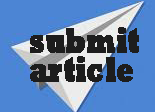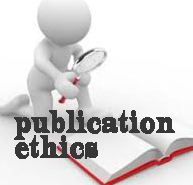Coliform AND Escherichia coli TESTS IN THE AIR OF THE WELLS OF THE VILLAGE SIDO MAKMUR KUALA DISTRICT LANGKAT DISTRICT
Abstract
Dug well water is a source of clean water that is used by 99.39% of the residents of Sido Makmur Village, Kuala District, Langkat District to meet their daily needs. The majority of people who have cow pens around dug wells trigger the importance of conducting microbiological water quality research, given the existence of dug wells that are very vulnerable to cow manure contamination. Therefore the research sample was taken based on the distance of the dug well with a cattle pen that is less than 5 meters. Five samples from Inpres Hamlet, Petak Dua Hamlet, Handayani Hamlet, Sidorejo Hamlet and Mandailing Hamlet were tested using the Most Probable Number (MPN) method in the North Sumatra Province Health Laboratory, to determine the presence of Coliform and Escherichia coli through the estimation test, assertion test , and test the completeness and coloring of grams. Then a biochemical reaction test is performed to confirm the presence of Escherichia coli. The results showed that all dug well water samples with sample codes ASG 01, ASG 02, ASG 03, ASG 04 and ASG 05 were positively polluted by Coliform through assertion tests with total Coliform exceeding the 80% threshold and below the threshold of 20% based on Minister of Health Regulation No. 416 / MENKES / PER / IX / 1990 concerning Requirements and Supervision of Water Quality. Then there is also the content of Escherichia coli in the five samples which exceeds the established threshold, the positive results of E.coli have also been strengthened through the results of gram staining and biochemical reaction tests. Therefore the dug well water samples tested are not feasible or do not meet the microbiological quality requirements for clean water.
Keywords
Full Text:
PDFReferences
Anju, A., Ravi S, P., & Bechan, S. (2010). Water pollution with special reference to pesticide contamination in India. Journal of Water Resource and Protection, 2010.
APHA. 1992. Methods for Examination of Water and Wastewater, 18th Edition. American Public Health Association. Washington DC.
Atlas, RM. 2010. Handbook of Microbiological Media,4th Edition. CRC Press. Washington DC.
Bambang, AG., Fatimawali, da Kojong, NS. 2014. Analisis Cemaran Bakteri Coliform dan Identifikasi Escherichia coli pada Air Isi Ulang dari Depot di Kota Manado. Pharmacon Jurnal Ilmiah Farmasi- UNSRAT. Vol 3(3). ISSN: 2302-2493.
Bettelheim, K.A. 2000. Role of Non O157 VTEC. Journal Applied Symposium Microbiology Supplement 88: 38-50.
Brooks, G., Carroll, K, C., Butel, J., & Morse, S. 2012. Jawetz, Melnick & Alberg’s Medical Microbiology. New York: Mc Graw Hill
BSN. 1992. Spesifikasi Sumur Gali untuk Sumber Air Bersih. SNI 03-2916-1992. Jakarta
Chatim, A. dan Surahman, S. 2002. Penuntunan Praktikum Mikrobiologi Kedokteran. Binarupa Aksara. Jakarta.
Dad, 2000. Bacterial Chemistry and Physicology. John Wiley dan Sons, Inc., New York.
Departemen Kesehatan R.I. 2010. Pedoman Pemberantasan Penyakit Diare. Dirjen PPM. Jakarta.
Dinas Kesehatan Kabupaten Langkat. 2017. Profil Kesehatan Kabupaten Langkat. Dinkes Kabupaten Langkat. Medan.
Dinas Kesehatan Provinsi Sumatera Utara. 2015. Profil Kesehatan Provinsi Sumatera Utara. Dinkes Provsu. Medan.
Dinas Kesehatan Provinsi Sumatera Utara. 2016. Profil Kesehatan Provinsi Sumatera Utara. Dinkes Provsu. Medan.
Dinas Kesehatan Provinsi Sumatera Utara. 2017. Profil Kesehatan Provinsi Sumatera Utara. Dinkes Provsu. Medan.
Feng, P., Weagant, S. D., Grant, M. A., Burkhardt, W., Shellfish, M., & Water, B. (2002). BAM: Enumeration of Escherichia coli and the Coliform Bacteria. Bacteriological analytical manual, 13(9), 1-13.
Hadimoeljono, B. 2016. Sumur Gali. Menteri Pekerjaan Umum dan Perumahan Rakyat. Jakarta.
Hadioetomo RS. 1993. Mikrobiologi Dasar Dalam Praktek Teknik dan Prosedur Dasar Laboratorium. Jakarta: PenerbitGramedia,
Hemraj, Vashist, dkk. 2013. A Review on Commonly Used Biochemical Test for Bacteria. India: Innovare Journal of Life Science.
Himedia Laboratories. 2019. http://himedialabs.com/TD/M001.pdf (accessed November 2019).
Ijong, F.G. 2010. Mikrobiologi Perkanan dan Kelautan. Penerbit Rineka Cipta. Jakarta.
Jawetz E. 2009. Medical Microbiology 24th ed. USA: Mc Graw hill.
Jawetz, M., Adelberg’s. 2013. Medical Microbiology 26th Edition. Mc Graw Hill Large. United States.
Johnston, J. E., Lim, E., & Roh, H. (2019). Impact of upstream oil extraction and environmental public health: A review of the evidence. Science of the Total Environment, 657, 187-199.
Kementrian Kesehatan Republik Indonesia. 1990. Peraturan Menteri Kesehatan No. 416/MENKES/PER/IX/1990 tentang Syarat-syarat dan Pengawasan Kualitas Air. Jakarta.
Kementrian Kesehatan Republik Indonesia. 2011. Situasi Diare di Indonesia. Kemenkes RI. Jakarta.
Kementrian Kesehatan Republik Indonesia. 2014. Profil Kesehatan Indonesia. Kemenkes RI. Jakarta.
Kementrian Kesehatan Republik Indonesia. 2015. Profil Kesehatan Indonesia. Kemenkes RI. Jakarta.
Kementrian Kesehatan Republik Indonesia. 2016. Profil Kesehatan Indonesia. Kemenkes RI. Jakarta.
Kementrian Kesehatan Republik Indonesia. 2017. Peraturan Mentri Kesehatan Republik Indonesia Nomor 32 Tahun 2017. Jakarta.
Kementrian Kesehatan Republik Indonesia. 2017. Profil Kesehatan Indonesia. Kemenkes RI. Jakarta.
Kusnoputranto, H. 1997. Kesehatan Lingkungan. Direktorat Jendral Pendidikan Tinggi Departemen Pendidikan dan Kebudayaan. Jakarta.
Lal, A., Chepthman, N. 2007. Eosin Methyle Blue Agar Protocol. ML Library American Society for Microbiology.
Lay, B.W. 1994. Analisis Mikroba di Laboratorium. PT Raja Grafindo Persada. Jakarta.
Leboffe MJ dan Pierre BE. 2011. A Photographic Atlas for the Microbiology Laboratory. Morton Publishing Company.
Leboffe, MJ., Pierce, BE. 2010. A Photographic Atlas for the Microbiology Laboratory, 4th Edition. Morton.
Linsley, R.K dan Franzini, JB., 1989. Teknik Sumber Daya Air. Erlangga. Jakarta
Merck, 1990. Microbiology Manual. Merck KGaA, Darmstadt.
Muller, Volker. 2001. Bacterial fermentation. Encyclopedia of life sciences. Nature publishing group. Jerman.
Pelczar, M.J dan E.C.S. Chan. 2006. Dasar-dasar Mikrobiologi. UI Press. Jakarta.
Pemerintah Kabupaten Langkat. 2019. Profil Desa Sido Makmur. Langkat.
Radji, M., Oktavia, H., Suryadi, H. 2008. Pemeriksaan Bakteriologi Air Minum Isi Ulang di Beberapa Depo Air Minum Isi Ulang di Daerah Lenteng Agung dan Srengseng Sawah Jakarta Selatan. Majalah Ilmu Kefarmasian. Vol 5(2). ISSN: 1693-9883.
Rajapaksha, P., Elbourne, A., Gangadoo, S., Brown, R., Cozzolino, D., & Chapman, J. (2019). A review of methods for the detection of pathogenic microorganisms. Analyst, 144(2), 396-411.
Schmithausen, R. M., Schulze-Geisthoevel, S. V., Heinemann, C., Bierbaum, G., Exner, M., Petersen, B., & Steinhoff-Wagner, J. (2018). Reservoirs and transmission pathways of resistant indicator bacteria in the biotope pig stable and along the food chain: a review from a one health perspective. Sustainability, 10(11), 3967.
Shweta, Sao, dkk. 2015. Isolaton and Identification of Microorganisms from Different Soil Samples of Bilaspur (C.G). Bilaspur.
Singh, J., Yadav, P., Pal, A. K., & Mishra, V. (2020). Water pollutants: Origin and status. In Sensors in water pollutants monitoring: Role of material (pp. 5-20). Springer, Singapore.
Soesetyono. H, 1980. Peranan Air Dalam Hubungannya dengan Penularan Penyakit, Majalah Kesehatan Masyarakat Th IX (24).
Sudarsono A. 2008. Isolasi dan Karakterisasi Bakteri pada Ikan Laut dalam Spesies Ikan Gindara (Lepidocibium flavobronneum). Skripsi. Bogor: Institut Pertanian Bogor.
Suhardini, S.K. 2005. Hubungan Jaeak dan Kualitas Fisik Sumur Terhadap Jumlah Koliform Tinja dan Kadar Zat Organik Air Sumur sekitar Peternakan Babi dan Industri Tahu di Desa Ngestiharjo Kecamatan Kasihan Kabupaten Bantul. Jurnal Manusia dan Lingkungan. 12(2): 73-79.
Suriawiria, U. 1996. Mikrobiologi Air dan Dasar-Dasar Pengolahan Buangan secara Biologis. Penerbit Alumni. Bandung.
Suwito, W. 2014. Pencemaran Bakteri dalam Air Sumur di Sekitar Peternakan Sapi potong Potong di Yogyakarta. Jurnal Acta Veterinaria Indonesiana. 2(2): 43-48.
Tankeshwar. 2015. Salmonella shigella diagnosis of bacterial disease.(Diakses pada 1 Mei 2020) di http:// microbeonline.com.
Wen, X., Chen, F., Lin, Y., Zhu, H., Yuan, F., Kuang, D., ... & Yuan, Z. (2020). Microbial indicators and their use for monitoring drinking water quality—A review. Sustainability, 12(6), 2249.
Widiyanti, N.L.P.M dan Ristiati N.P. 2004. Analisis Kualitatif Bakteri Koliform Pada Depo Air Minum Isi Ulang di Kota Singaraja Bali. Jurnal Ekologi Kesehatan. 3(1): 64-73.
Widiyanto, A.F. 2015. Polusi Air Tanah Akibat Limbah Industri Dan Limbah Rumah Tangga. Jurnal Kesehatan Masyarakat. 10(2): 246-254.
Widodo, TS. Sulistiyanto, B. dan Utama, CS. 2015. Jumlah Bakteri Asam Laktat BAL) Dalam Digesta Usus Halus dan Sekum Ayam Boiler yang Diberi Pakan Ceceran Pabrik Pakan yang Difermentasi. Agripet. 15(2): 98-103.
Yusmaniar, W dan Khairun N. 2017. Bahan Ajar Farmasi Mikrobiologi dan Parasitologi. Kementrian Kesehatan Republik Indonesia.
Zega, M.F dan Hasruddin. 2018. Uji Coliform dan Escherihia coli pada Depot Air Isi Ulang di Kecamatan Medan Deli. Jurnal Biosains. 4(1): 10-16.
DOI: https://doi.org/10.24114/jbio.v8i1.18755
Article Metrics
Abstract view : 286 timesPDF - 385 times
Refbacks
- There are currently no refbacks.

This work is licensed under a Creative Commons Attribution 4.0 International License.
INDEXING
JBIO : Jurnal Biosains (The Journal of Biosciences), Program Studi Biologi, Fakultas Matematika dan Ilmu Pengetahuan Alam, Universitas Negeri Medan. ISSN 2443-1230 (print) dan ISSN 2460-6804 (online)

Ciptaan disebarluaskan di bawah Lisensi Creative Commons Atribusi 4.0 Internasional.


.png)






